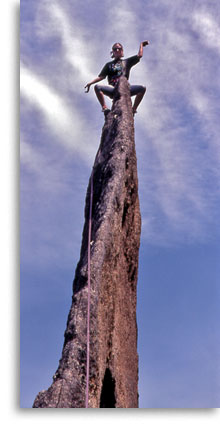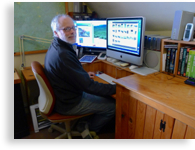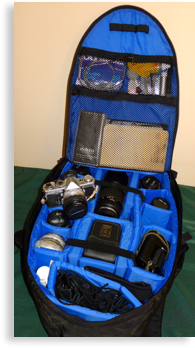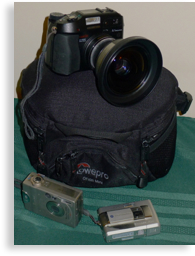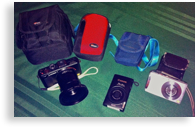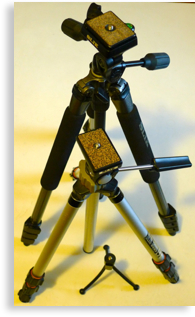
|
Site Information & Map |
|||||||||||||||
|
About This Web Site When we undertook the design of this site we employed web designer Jim Mitchell at WSI Albany to help us lay a solid foundation. He provided two very important contributions. First, although he is in the business of designing and maintaining web sites, he was willing to lend his expertise to us with the knowledge that we, not he, would be building the site. He offered us many valuable and practical suggestions. Second, he helped us come up with a “look” for the site. His intial design, although we have changed it some, allowed us to create a site with the look and feel we wanted to communicate to our audience. Thanks Jim; you got the ball rolling. This site is designed to be viewed with web browsers of at least version 4.x on either Macintosh or Windows. If you are still using an older browser, it is time to climb onto your horse for a trip down to the general store where you can get an upgrade. The photos and other graphics on this site were optimized for viewing at Windows gamma (about 2.2). If you are viewing the site on a Mac (at a gamma of 1.8) you might find the photos look slightly “washed out”. If your Mac is running OS X you might wish to go to your “displays” control panel and change the gamma to the Windows setting (2.2) – it’s an easy change that will make most of your web browsing look more like designers intended. We leave our Mac monitors at this setting pretty much all the time. Created and managed using Adobe GoLive CS, this site contains more than 100 separate pages (some of these pages contain as much as the equivalent of 15 pages of printed text), around 400 different photographs (each with an enlarged view) and a whole lot of code to make it all work together. We’d like to believe it all functions flawlessly but that is hardly likely. If you find problems we would sincerely appreciate your letting us know. Thanks! |
|
||||||||||||||
|
About The Photographs Technical Photography Details: Most of the photos, prior to 2001, were made with Olympus 35mm OM System bodies and lenses. Nearly all of these images were transparencies (Kodachrome 64 or Fujichrome Velvia) and most were made with an OM-1N body, and Zuiko 21mm, 28mm or 100mm lenses. Riding in a rugged Lowe-Pro belt pouch, this system made countless climbing and skiing trips. Olympus XA 35mm compact cameras were also used on many trips. When weight was not a problem (rarely), Zuiko 50mm, 80mm macro, 135mm macro, 200mm, and 300mm lenses were added along with an assortment of other bodies, extension tubes, flashes and tripods. For a short while, the tiny Canon Elph APS camera was used, but the limited quality and lack of transparency film for this camera made it impractical. Transparencies (and a handful of prints) were scanned into Photoshop for use on this web site. Starting in late 2000, most of the photos are from a digital camera. The Canon Digital Elph S100 (28mm thru 55mm equivalent) and the Minolta Dimage X (37mm thru 110mm equivalent) each provided 2 megapixel images and either could be easily carried in a shirt pocket while climbing or skiing - no more excuses for leaving the camera behind. Both of these cameras captured images suitable for the web or up to 8”x10” inkjet prints. In June 2004 we added the Olympus C-5060 Wide Zoom to our growing collection of digital cameras. The camera's ED lens (27mm thru 110mm equivalent) and 5.1 megapixel resolution produce much better images. Although not as tiny as our pocket-sized digital cameras, this compact camera featured great macro images and a high quality accessory lens that allowed wide-angle photos to 20mm equivalent. This wide focal length is essential for capturing climbers in the climbing environment. This camera was the turning point after which we rarely carried a film camera. As digital cameras continue to improve, offering better image quality, greater ranges of focal length, longer battery life, and more useful features we expect our film cameras to gather even more dust. Our darkroom has already gone the way of the dinosaur. Every photo made a journey through Photoshop on its way to this web site. Before being compressed for the web, dust and other flaws were removed from scans. Scans and digital photographs were cropped and adjusted in Photoshop in an attempt to show the scene the way we photographed it. In most cases colors were corrected and an image’s shadows and highlights were manipulated to clarify detail. All images were sharpened to some degree. In a few cases, distracting elements were “removed” to make a photo clearer, or an image was obviously altered for artistic reasons, but we generally avoided Photoshop “trickery”. In other words, all heads are actually on their own bodies, foregrounds and backgrounds are actually from the same photo, and what you see in the photos is essentially what we saw when we took them. 2013 Update: We've added a bunch of photos, more cameras, and new software since 2005! The Minolta Dimage X60's very compact size, 5 megapixel sensor, and sliding lens cover made it a real workhorse for several years despite the fact that it's 38mm thru 114mm equivalent lens was not quite wide enough a lot of the time. When the Panasonic Lumix DMC FX-500 became available in 2008 we decided its wider lens (25mm thru 125mm equivalent) and 10.1 megapixel sensor were well worth the small increase in size over the Dimage X60. In fact, this camera turned out to be great for climbing! It's excellent jpeg rendering engine, effective optical image stabilization, intelligent auto mode and great lens immediately improved our photos and the 3" LCD screen was easy on our eyes. We shot close to 50,000 photos and went through several of these cameras (sometimes climbing is hard on cameras!) and we still have one in use today. We started shooting more video about 2008 when we acquired the Kodak Zi8. Along with the GoPro HD Hero 2, these cameras let us shoot HD video pretty much anywhere. In 2010 we added the iPhone 4 to our list of cameras for occasional stills and movies. Although we normally shoot with 'real' cameras, the iPhone is handy for a quick photo or video. In 2012 we added the Panasonic Lumix LX5 and its wide angle accessory lens to our collection of cameras. It has a slightly larger form factor, larger sensor, superb lens, 10.1 megapixel resolution, 24mm thru 90mm equivalent focal length, and better image quality than our smaller cameras! The accessory lens results in an 18mm equivalent field of view for super-wide climbing shots. With lots of control and great image quality for a small camera it makes slowing down and photographing with a purpose worthwhile. Because this camera does a great job on auto but allows total manual control too, it does almost everything very well - except it does not quite fit into a shirt pocket. Another recent addition was the Canon ELPH 110 HS camera in late 2012. This is the smallest digital camera we have owned thus far and its 16.1 megapixel sensor along with the 24mm thru 120mm equivalent lens and HD video mode make it a very practical camera for climbing. It fits anywhere! Image quality is not up to the LX5 but it is adequate for the web. On top of that, this camera is on the low end of the price spectrum so it's ideal for the abuse climbing dishes out. On the software front, we've mostly abandoned Photoshop in favor of Apple's Aperture and iPhoto. These programs integrate with our iOS devices far better than Photoshop, offer a great system for managing lots of photos, and provide all the adjustments we need for most of our images. In addition, presentations, books, calendars and cards are now just a few clicks away! A digital SLR can certainly offer great image quality but not when it's sitting in your pack at the base of the climb! We love our compact cameras and we actually carry them whenever we go out. For us, capturing a compelling image on a compact camera is far better than failing to get a higher quality image because the camera was too big or too heavy to carry. That doesn’t mean we don’t appreciate a big sensor, weather sealing, a broad selection of lens focal lengths and apertures to choose from, or a hefty tripod to steady it all - it's just that it isn’t worth carrying all that weight and bulk on most climbs! Digital cameras keep getting better and smaller, and the Micro 4/3 system now offers scaled-down, high-quality, interchangeable-lens digital cameras that approach DSLR quality at compact camera size and weight. We waited, and waited and waited some more for this to happen! M43 sensors finally came of age in 2012. For 2013, our latest digital camera is the tiny Olympus E-PL5, our first interchangeable lens camera in more than 20 years! With its extraordinary image quality, diminutive size and lots of M43 lenses available, we have high expectations. We chose compact Olympus Zuiko Digital 28-84mm and 80-300mm (35mm equivalent) zoom lenses, along with an adaptor for our Zuiko OM 35mm system lenses to get started. Time will tell if this is the new ‘holy grail’ of cameras. |
||||||||||||||
|
Web Site Map
|
|||||||||||||||
|
~ Mountain Adventures In the Adirondacks Since 1985 ~ |
|||
|
Alpine Adventures, Inc. |
(518) 576-9881 |
||
